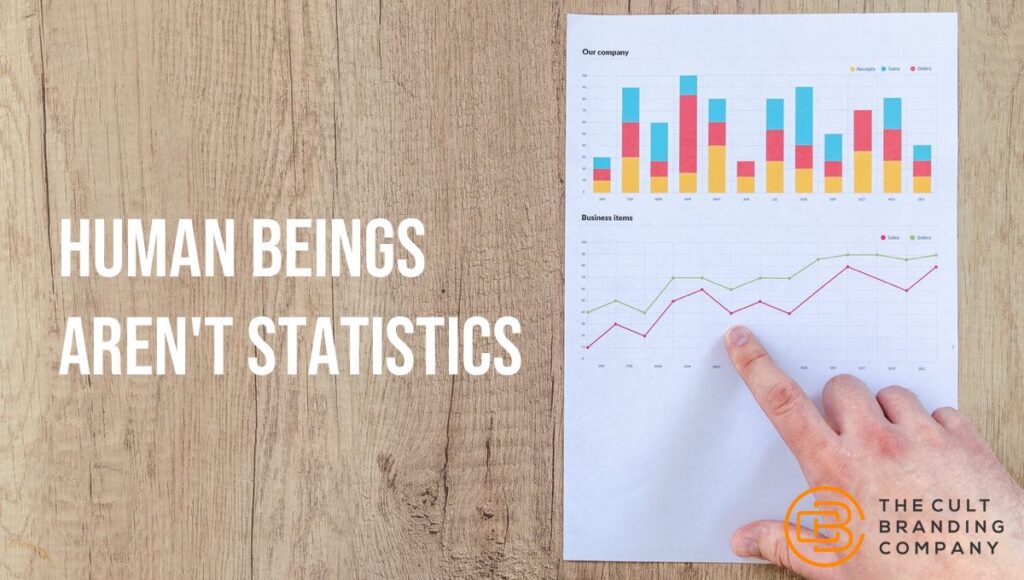28 Sep 7 Insights CEOs Need to Know About Their Customers

We now have access to limitless customer data.
But for business leaders who are committed to knowing their customer, the numbers alone will never be enough.
Why? Because human beings aren’t statistics.
The Human Behind the Numbers
If we are to get to the human side of the equation, we need to wear two different hats: that of a psychologist and an anthropologist. We need to observe our customers (like good anthropologists) and probe their psyches (like good psychologists).
Then, the human story emerges and puts us in a position to understand and serve our customers better than anyone else.
Seven Insights that Reveal the Customer Story
In our coaching work as customer advocates, we are frequently tasked with viewing the marketplace through the eyes of the anthropologist and the psychologist.
Our aim is to help translate the customers’ inner worlds into a language business leaders can understand and use.
Here are seven foundational insights we look to uncover and why they are important.
1: Tensions You Help Customers Resolve
Tensions are a defining characteristic of the human experience. Behind every aspiration or unmet need lies a tension—an opposing impulse.
Tensions are at the core of all great stories; they are behind every hero’s adventure. Tensions are what drives your customers to conduct business with you.
What are the primary tensions your customers are trying to resolve through their interaction with your business?
2: Positive Emotions You Help Customers Experience
Customers make buying decisions primarily from the irrational-emotional center of their brains (limbic system), not the rational-thinking center (prefrontal cortex).
When you know the positive emotions your customers experience when they interact with you under ideal conditions, you can find ways to create more of these experiences.
What are the primary emotions your customers experience when they interact with your business under ideal conditions?
3: Needs You Help Customers Meet
We spend a great deal of time on the topic of human needs on this blog because they are so fundamental and yet so commonly overlooked among executives. Humans are biological creatures. We are driven to meet a basic set of human needs.
But humans are also “spiritual” beings. We are inspired to grow, develop, and transform ourselves. Businesses that help customers tap into these higher level needs foster strong bonds that lead to loyalty.
What needs does your business help your customers’ meet? Are you helping them meet higher human needs too?
4: Archetypes Customers Associate to You
Carl Jung discovered that the human psyche is comprised mainly of images. Many of these images are cross-cultural, found all over the earth in our myths, dreams, and fairy tales. He called these universal images archetypes. These archetypal images trigger instinctual, physiological urges that lead to set patterns of behavior.
When you know your business’s archetypes, you can determine the images and emotions that will align your corporate culture and consistently attract the right customers.
What are the archetypes that drive your customers’ interaction with your business?
5: Beliefs Customers Hold About You
Our beliefs form systems in our minds that act as a filter through which we perceive reality. Your customers believe specific things about your business (some are based on objective reality, others are not).
When you know your customer’s perception of your brand, you can ensure that you’re matching and elevating their perception.
What do your customers believe about your products/services/organization?
6: Common Characteristics Your Best Customers Share
Starting in our adolescent years, we begin to develop self-concepts and an identity of who we are. Although you likely have a diverse range of customers with various backgrounds, ethnicities, religious beliefs, worldviews, and so on, your best customers likely share certain defining qualities or personality traits.
These characteristics are not demographic details; they are relevant descriptions of who your customers are. If you can identify these shared traits, you can market to them in relational and meaningful ways.
What are the common characteristics that a large host of your best customers share?
7: Reasons Why Customers Choose You First
Your customers choose you over your competitors for specific reasons, some rational, some irrational. Rational drivers of choice in retail, for example, include quality, fit, convenience, size, selection, price, value, location, and customer service.
When you know what drives your customers to choose you, you know what’s important to them. With this knowledge, you can capitalize on these drivers and find ways to become irreplaceable in your customers’ minds.
Do you know what drives your customers to choose you over your competitors?
Onward
Getting to these insights, of course, is no simple task.
Thankfully, our goal isn’t to get the answers “right,” but to simply get closer to the center, to get in proximity to our customers’ hearts and minds. If we view our customers as human beings first and consumers second, we’re already on our way.
We come to these queries not from a desire to exploit or manipulate our customers, but to understand them, build relationships with them, and better serve them.
And, we must continually remind ourselves that there are no final answers: your customers—and your business—are in a constant state of change.
Imagine how different your business would be if you knew just half of the insights from the list above. How would it affect your decisions? How would it influence your vision for your enterprise?
Imagine the possibilities.

